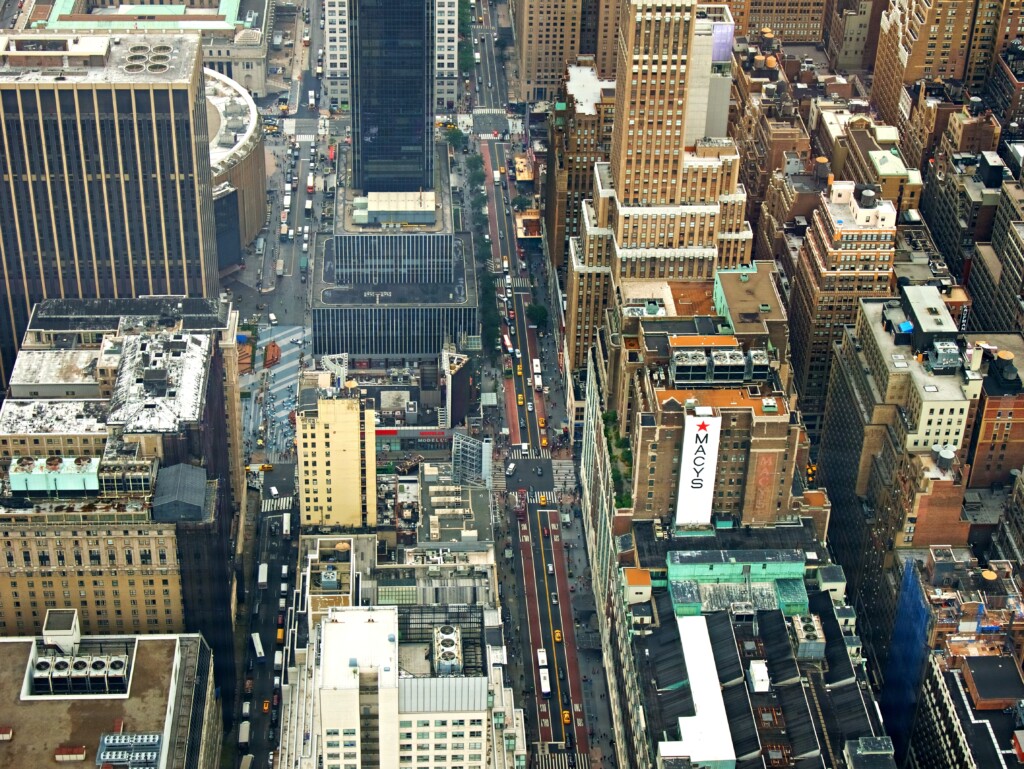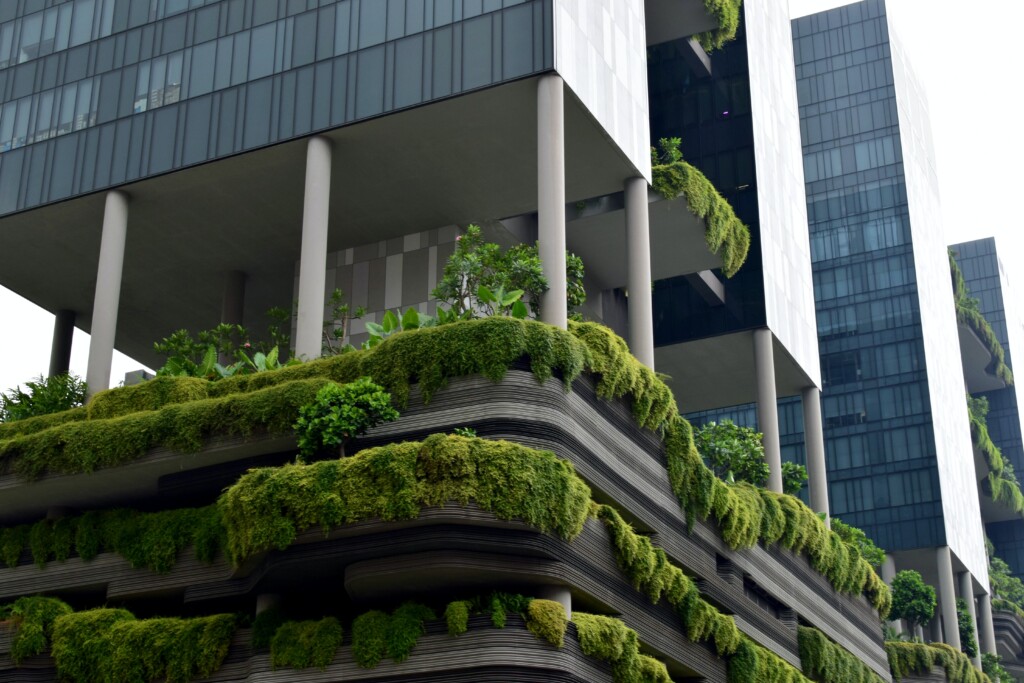We are the first generation to feel the impact of climate change and the last generation that can do something about it.
– Jay Inslee
Climate change is causing a rise in global temperatures, which in turn is leading to a rise in sea levels. This is particularly concerning for cities located on coastlines, as they are at risk of flooding and erosion. As sea levels continue to rise, cities will need to take measures to protect their infrastructure and residents from the effects of climate change.Extreme weather events, such as hurricanes, floods, and heatwaves, are becoming more frequent and intense due to climate change. This can have devastating effects on cities, causing damage to buildings, infrastructure, and people’s livelihoods. Cities need to be prepared to handle these events and take steps to mitigate their impact.
Climate change can also have indirect effects on cities, such as changes in precipitation patterns and the spread of diseases. For example, increased rainfall can lead to flooding and landslides, while droughts can lead to water shortages and wildfires. The very pulse of city life—its rhythm, economy, and community well-being—becomes susceptible to these environmental onslaughts. Cities need to adapt to these changes and implement strategies to minimize their impact on residents.
The science behind sea level rise is quite complex, but it can be simplified into a few key concepts. First, the Earth’s climate is changing due to human activities such as burning fossil fuels and deforestation. This is causing the planet to warm up, which in turn is causing the polar ice caps and glaciers to melt. As these ice masses melt, the water they contain flows into the oceans, causing sea levels to rise.Another factor contributing to sea level rise is the thermal expansion of seawater. As the oceans absorb more heat from the atmosphere, the water molecules become more energetic and spread out, causing the overall volume of the ocean to increase. This expansion accounts for about one-third of the current rate of sea level rise.
Sea level rise is not a new phenomenon, but the rate at which it is occurring is unprecedented. Over the past century, sea levels have risen by about 8 inches, and they are projected to rise by another 1 to 4 feet by the end of this century. This may not sound like a lot, but even small increases in sea level can have devastating effects on coastal communities, causing flooding, erosion, and saltwater intrusion into freshwater souIn addition to these factors, human activities such as burning fossil fuels and deforestation are also contributing to sea level rise. These activities release greenhouse gases into the atmosphere, which trap heat and cause the planet to warm. This warming is causing the ice sheets to melt and the oceans to expand, leading to sea level rises.

Among the cities grappling with the imminent threat of climate change is New York City. With its extensive coastline, sprawling infrastructure, and dense population, the question arises: Is New York City sinking? The answer is complex, encompassing a multitude of factors, both natural and human-induced, that contribute to this alarming phenomenon.
One of the leading causes of sea level rise is the melting of polar ice caps, caused by the rapid increase in global temperatures. As these massive ice formations dissolve, they release enormous volumes of water into the oceans. This influx, combined with the expansion of seawater asit heats, results in a significant rise in sea levels. Coastal cities, such as New York City, are particularly vulnerable to this global phenomenon. It is not that NYC is physically sinking, but rather, the rising sea levels give the effect of the city sinking. Studies show that sea levels in NYC have been rising at a rate nearly twice the global average, posing a serious threat to its infrastructure and inhabitants. Therefore, while it is technically incorrect to say that NYC is sinking, it is accurate to state that it is becoming increasingly submerged due to rising sea levels directly linked to climate change.
Additionally, beyond the direct impacts of melting ice caps and thermal expansion of the seas, New York City faces another challenge: land subsidence. Land subsidence, or the gradual sinking of the Earth’s surface, can be attributed to various factors. In the case of NYC, the extraction of groundwater for urban needs and the natural compaction of sedimentary layers play roles in this downward shift. This phenomenon, when combined with rising sea levels, exacerbates the perceived sinking of the city.
Furthermore, New York’s extensive system of subways and underground infrastructure is particularly vulnerable. Saltwater intrusion, a result of higher sea levels, can corrode transportation systems, power grids, and foundational structures, accelerating deterioration. This not only poses immediate operational challenges but also amplifies long-term costs related to maintenance, repair, and potential overhauls. The confluence of these factors signifies the urgency for comprehensive planning, adaptation, and resilience-building to safeguard New York City’s future.

The current sea level in NYC is approximately 1.5 feet (0.45 meters) higher than it was in 1900. This increase is primarily due to global warming and the resulting melting of glaciers and ice sheets, which causes the oceans to expand and sea levels to rise. The rate of sea level rise in NYC has been accelerating in recent decades, and is projected to continue to do so in the future. New York City is more vulnerable to sea-level rise than other cities due to its geography. The city is located on a group of islands and surrounded by water on all sides. This makes it more susceptible to flooding and storm surges caused by sea-level rise.Additionally, the city’s infrastructure is built on low-lying land, which is already prone to flooding during heavy rainfall. As sea levels rise, the frequency and severity of flooding events will increase, putting more pressure on the city’s infrastructure and potentially causing significant damage.
Another factor that makes NYC more vulnerable to sea-level rise is its high population density. With over 8 million people living in the city, any disruption to the city’s infrastructure or services could have a significant impact on the population.Finally, NYC is home to many important economic and cultural institutions, such as Wall Street and Broadway. New York City also has the largest subway system in the world, which could be at risk of flooding due to sea level rise. These institutions are critical to the city’s economy and could be severely impacted by sea-level rise and flooding events.
Beyond the already mentioned factors, NYC’s geological history further magnifies its vulnerability. Historically, the area underwent a glacial rebound. When the Ice Age glaciers retreated, previously compressed lands began to slowly rise in a process known as isostatic rebound. Conversely, areas that weren’t covered by glaciers, like NYC, started to sink, a process that continues even today. This gradual sinking, or subsidence, compounds the challenges of sea-level rise for the city. New York City’s built environment also plays a role. Expansive impervious surfaces like concrete and asphalt prevent water from being naturally absorbed into the ground. This lack of permeability intensifies flooding, especially during high tide or storm events.
The city’s stormwater drainage systems, designed years ago, may not have the capacity to handle the projected increase in water volumes. This can lead to “nuisance flooding” – recurrent minor floods that, while not catastrophic, are disruptive and can degrade infrastructure over time. In the realm of public health, the city’s density and size mean that flooding could lead to more widespread health crises. Stagnant floodwaters can promote the growth of harmful pathogens and become breeding grounds for disease-carrying vectors, such as mosquitoes.
New York City is taking several measures to adapt to the threat of sinking. One of the most important steps is the construction of sea walls and barriers to protect the city from rising sea levels and storm surges. For example, the East Side Coastal Resiliency Project is a $1.45 billion initiative that will construct a 2.4-mile-long flood protection system from East 25th Street to Montgomery Street in Lower Manhattan. The project will include a combination of flood walls, berms, and levees to protect the area from future flooding. Another way the city is adapting to the threat of sinking is by investing in green infrastructure. This includes the construction of green roofs, which absorb rainwater and reduce stormwater runoff, as well as the creation of green spaces like parks and gardens. These measures not only help to mitigate the effects of sinking but also provide other environmental benefits such as reducing the urban heat island effect and improving air quality.
The city is also taking steps to improve its wastewater management system. The New York City Department of Environmental Protection is investing in upgrades to its wastewater treatment plants to improve their resilience to flooding and sea level rise. The city is also exploring the use of green infrastructure to manage stormwater runoff and reduce the strain on the wastewater system during heavy rain events.Finally, the city is working to raise awareness about the threat of sinking and the importance of taking action to address it. The NYC Mayor’s Office of Resiliency has launched several public education campaigns to inform residents and businesses about the risks of sinking and the steps they can take to prepare for it. The city has also developed a comprehensive plan, called OneNYC, which outlines its strategy for building a more resilient and sustainable city for the future.

The role of government in protecting New York City from flooding is crucial. The government has the power to implement policies that can help mitigate the effects of climate change and reduce the risk of flooding. One such policy is the implementation of green infrastructure, which involves the use of natural systems such as wetlands and green roofs to manage stormwater runoff. This can help reduce the amount of water that enters the city’s sewer system and prevent flooding. Another important policy is the regulation of development in flood-prone areas. The government can restrict or prohibit development in areas that are at high risk of flooding, which can help prevent damage to property and reduce the risk of loss of life.
Additionally, the government can require developers to build structures that are more resilient to flooding, such as buildings that are elevated or have flood barriers.The government can also provide funding for research into new technologies and strategies for mitigating the effects of climate change and reducing the risk of flooding. This can include funding for the development of new green infrastructure projects, as well as research into the effects of climate change on the city’s infrastructure and how to adapt to these changes.Finally, the government can work with other stakeholders, such as community groups and businesses, to raise awareness about the risks of flooding and the importance of taking action to mitigate these risks. This can include education campaigns, community outreach programs, and partnerships with businesses to promote sustainable practices and reduce their environmental impact.
The cost of inaction for NYC in the face of rising sea levels and increased flooding due to climate change could be catastrophic. The city’s infrastructure, including its subway system, roads, and buildings, are all vulnerable to flooding and storm surges. The damage caused by Hurricane Sandy in 2012, which resulted in over $19 billion in damages, is a stark reminder of the potential costs of inaction.According to a report by the New York City Panel on Climate Change, sea levels could rise by as much as six feet by the end of the century, putting over 800,000 New Yorkers at risk of flooding. This could result in billions of dollars in damages to homes, businesses, and infrastructure, as well as displacement of residents and loss of life.In addition to the immediate costs of damages and displacement, there are also long-term economic costs associated with inaction. As businesses and residents move away from flood-prone areas, property values could decline, leading to a decrease in tax revenue for the city. The cost of insurance for homes and businesses in flood-prone areas could also increase, further driving up costs for residents and businesses.
Taking action to address the impacts of climate change and rising sea levels in NYC is not only necessary to protect the city and its residents, but it also presents an opportunity for economic growth and job creation. Investing in renewable energy, green infrastructure, and sustainable transportation can create new industries and jobs, while also reducing the city’s carbon footprint and improving air quality. Moreover, the impact of climate inaction on public health in NYC could be profound. The frequency of heatwaves is predicted to increase, putting vulnerable populations, like the elderly, at greater risk of heat-related illnesses and fatalities. Similarly, the standing floodwaters can become incubators for diseases and can contaminate freshwater sources, leading to waterborne diseases. Furthermore, ignoring the threat of rising sea levels could deter global businesses and investors from considering New York as a viable location, potentially diminishing its stature as a global financial hub. Additionally, cultural landmarks and historical sites at risk might lose their appeal, potentially affecting tourism—a vital economic contributor to the city.
The psychological and social toll on New Yorkers cannot be overlooked. Continuous disruptions, relocations, or the perpetual threat of disaster can affect mental health, community cohesion, and overall quality of life. As such, proactive measures not only make economic sense but are imperative for safeguarding the well-being of its citizenry.
NYC’s Commitment: The city has allocated a $10 billion plan dedicated to countering the effects of sea level rise.
Expansion of Green Spaces: Increasing parks and green roofs within the city to absorb more rainwater and minimize runoff.
Green Walls & Vertical Gardens: These features on city buildings serve dual purposes – they absorb rainwater and provide insulation, reducing the urban heat island effect which can amplify flooding.
Rainwater Collection & Reuse: Encouraging the collection of rainwater for non-drinking purposes, such as toilet flushing or irrigation, lightens the load on the municipal water supply and efficiently manages stormwater.
Permeable Pavement: Implementing permeable surfaces allows rainwater to seep into the ground, preventing it from running off into streets. This solution is especially effective in expansive areas like parking lots.
Transition to Renewable Energy: By adopting energy sources like solar and wind power, NYC can decrease greenhouse gas emissions. This not only addresses the root causes of climate change but also reduces future weather extremes and associated flooding risks.

While green solutions offer multiple benefits, their effectiveness can vary depending on the severity of the weather event. They are generally more effective for moderate rainfalls and less so during extreme events like hurricanes.
Green solutions could potentially lower flood risk, which in turn might influence insurance premiums. However, this is highly dependent on the insurance provider and local regulations.
The lifespan can vary widely depending on the material used and maintenance. Generally, permeable pavements can last up to 20-25 years, and green roofs can last as long as 40 years with proper care.
Stay a while and read more posts like this
Imagine a world powered almost entirely by resources that are slowly disappearing – this is the current reality with non-renewable resources. These are the hidden...
Green Energy, Green Living, Renewable Energy
Ever pondered the impressive perks of using green energy? Given the burgeoning cognizance about how traditional energy sources are affecting our environment, the...
Green energy initiatives are rapidly transforming the way we think about and use energy. Not only do they represent a practical solution to the global energy...